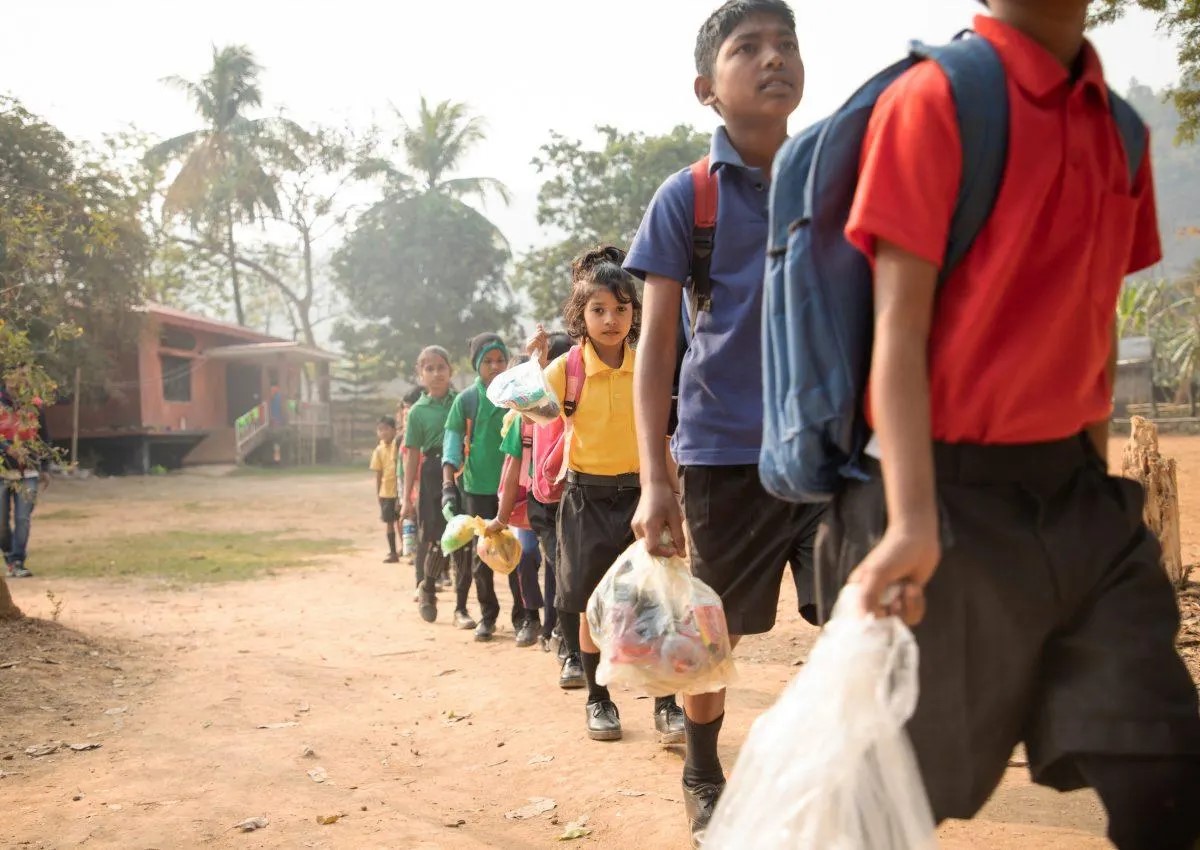
Climate change is on the rise and extreme weather conditions such as floods, heatwaves, and wildfires are becoming more frequent and severe. And schools are particularly vulnerable to these changes as they remain ill-equipped and unprepared to handle these challenges. According to a report by UNESCO, droughts and desertification affect 250 million people worldwide and prevent millions of children from attending school every year. It’s high time now we don’t see building resilient schools as an option, but a necessity for smooth continuity in education amid increasing environmental threats.

Climate change is one of the biggest challenges we face today. It is no longer something we can worry about in the distant future—it's happening right now. There is extreme weather, rising sea levels, heatwaves, floods, and wildfires occurring all around the world. People are migrating from their homes, seeking refuge in other countries in search of better living conditions. For example, in the Pacific islands, rising sea levels are slowly flooding entire communities, leaving people with no choice but to leave their homes and seek refuge in New Zealand and Australia. Similarly in Bangladesh, frequent floods and cyclones are forcing people to migrate from rural areas to cities or even other countries such as India.

A leisurely walk in Sanjay Van or Cubbon Park are coveted activities for residents of Delhi and Bengaluru who feel drawn to these green spaces. Called the ‘lungs’ of the cities, these urban forests and green spaces are important for enhancing the well-being of the residents, improving air quality, and mitigating the effects of climate change by reducing air temperature and weathering storms or cyclones.

Did you ever think that the clothes we love might be part of the pollution around us?

Gone are the days when recycling meant dealing with unregulated, informal scrap dealers. The new-age kabadiwalas are stepping up to bridge the gap between sustainability and convenience. These digital platforms and mobile applications provide safe, transparent, and efficient ways to recycle waste, redefining the role of traditional scrap dealers.

Have you ever thought about the possibility of using something as simple as plastic to pay for school instead of money? While traditional schools demand a financial toll, there's a hidden gem Pamohi village in Assam, that challenges this norm – Akshar School. Here, education takes on a new form, where over 100 unprivileged children contribute not in cash but in bags filled with plastic waste. This is no ordinary school. It's a place of change, where education meets innovation, and where plastic finds a purpose.

At just 17 years old, Vinisha Umashankar, a native of Tiruvannamalai, Tamil Nadu, has already made a remarkable impact as a young innovator committed to environmental sustainability. Her journey began with a simple yet profound observation when she noticed an ironing vendor dumping burnt charcoal into a garbage dump. This incident sparked her interest and set her on a path of investigating the environmental impacts of charcoal burning. What she discovered was alarming—ecological degradation, health hazards, and deforestation are all linked to charcoal production.

In Uganda, the impacts of climate change are being felt across the nation, posing significant threats to both the environment and the livelihoods of its people. From increasing droughts and floods to altering rainfall patterns and seasons, the consequences of climate change are far-reaching and profound.

Water spans 70% of the Earth, although just 3% is freshwater. Of this, around 2% is trapped in glaciers and ice caps, leaving only 1% available for human consumption. This scarcity is starkly highlighted by the sight of young children going great distances carrying pots of drinking water perched on their heads to satisfy their daily requirements. Water shortage is a growing worldwide issue that affects every continent and country. This severe reality highlights the essential role of water for survival, yet many still struggle to access even the basic amounts needed. According to reports, over 2 billion people are already experiencing water shortages, and by 2025, two-thirds of the world's population is predicted to face similar issues.

A recent UNESCO report reveals the profound impact of climate change on children's education worldwide. Rising temperatures, extreme weather events, and environmental degradation are disrupting learning in numerous ways, particularly in vulnerable regions.